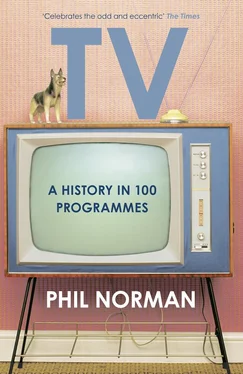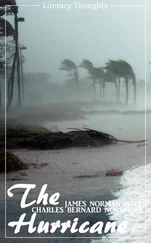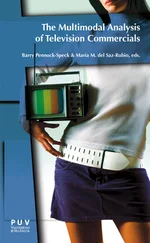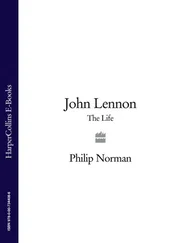After the DuMont network collapsed, Kovacs returned to NBC to occupy a variety of slots, culminating in his first prime-time gig, an 8 p.m. Monday night spectacular from a real theatre, with a real audience. The show also came with a real budget that Kovacs didn’t hesitate to spend with alarming profligacy: huge song-and-dance numbers were choreographed, incorporating giant flights of collapsible stairs; Boris Karloff was paid top dollar to recite the alphabet. The transition from backroom ‘improv’ to gargantuan showcase came surprisingly easily to him.
One sketch from these shows was far ahead of its time. To the thunderous accompaniment of drum rolls and the clatter of teleprinters, Kovacs appeared as a self-important newsreader, employing primitive in-camera effects to lampoon the already excessive presentation of TV news decades before the likes of Chris Morris. One sketch, ‘News Analyst ’ , is uncannily modern in its approach:
KOVACS: Good morning. This is Leroy L. Bascombe McFinister …
[Picture is wiped inward, leaving tiny vertical slit in middle through which we glimpse Ernie.]
KOVACS:… with the news.
[Wipe widens to full set.]
KOVACS: Behind the news.
[Picture tilts right.]
KOVACS: News flashes and news highlights.
[Tilts upside down.]
KOVACS: Events of the day and events of the night.
[Picture spins 360 degrees to left.]
KOVACS: Brought to you …
[Picture spins to right, ends upside down.]
KOVACS:… as they happen …
[Picture spins upright.]
KOVACS:… when they happen.
[Tilts to right, then back.]
KOVACS: News!
[Tilts to left, then back.]
KOVACS: From all over!
[Shot of spinning world globe – hand reaches in and stops globe.] 24
(This complex, frenetic high-tech skit was, astoundingly, performed live.) The final NBC Kovacs show climaxed with a dance number that had close to 100 people and animals on stage, ending with the destruction of the set as the credits rolled, while perspiring executives picked up the tab.
Kovacs simultaneously subbed for Steve Allen, hosting the Monday and Tuesday editions of Tonight . His effects-heavy fantasies didn’t sit well in a show built around talk and the expense of the more elaborate gags made his tenure brief. But it did incubate two of his most famous routines: Eugene, a featherweight tenderfoot whose every action caused loud, incongruous sound effects; and the tilted room, a set built on a slant which a prism lens restored to the vertical, rendering everything from olives to milk prone to hare off in bizarre directions as the hapless Eugene looked askance.
In January 1957 Kovacs was parachuted into a prime-time slot following a much-publicised Jerry Lewis special. Spotting a potential big break, he put everything into devising a speech-free showcase of his very best material. The ‘No Dialogue’ show was meticulously executed, including a perfected and expanded tilted room sketch. This was crafted comedy in the fullest sense, and won plaudits galore. Another equally precise special, Kovacs on Music , featured the comedy debut of André Previn. Kovacs had finally made the big time, but his pinnacle was precarious. The early experimental spirit of US TV was being rapidly eroded as big money entered the equation, and ratings became the only thing that mattered.
Kovacs was obliged to switch again, to ABC, for a series of specials and a quiz show, Take a Good Look . The quiz show featured his most expensive gag of all – as a used car salesman slaps a car on the bonnet, it falls through a hole in the ground, creating a bill of thousands of dollars for a thirty-second quickie. The specials were recorded with a dedicated crew in marathon all-weekend studio lock-ins. Alongside familiar routines, he created elaborate and rather elegant musical ballets of office equipment and other inanimate objects. His disdain for network top brass made itself felt in satirically amended end credits.(‘Associate Producer (That’s like STEALING money!)’)
These shows won Kovacs his only Emmy, for ‘outstanding achievement in electronic camerawork’. He died in a car accident shortly after recording the eighth, which was shown in tribute a fortnight later. Like the experimenters who followed him, Kovacs remained on the fringes of television, distrustful of its grandees and eager to undermine and mock them at every opportunity, finding door after door slammed in his face as a result. As a career model for fame-hungry comics, he was as lousy as they came. As a master craftsman, he was among the greatest.
THE PHILCO-GOODYEAR TELEVISION PLAYHOUSE: MARTY (1953)
NBC (Showcase)
TV drama mines the mundane.
I am just now becoming aware of this marvellous world of the ordinary. This is an age of savage introspection, and television is the dramatic medium through which to expose our new insights into ourselves.
Paddy Chayefsky, 1956
AS TELEVISION BEGAN COLONISING the lounges of urban America, Hollywood started to panic. Playing to their strengths, the big studios began turning out product that emphasised the things TV couldn’t provide: colour, star power, and most of all, size. The big screen was filled with big names in big adventures; pageants, epics and melodramas in which the safety of lives, societies, even the world hung in the balance. The challenge was made: fit that lot into your ten inches of bulbous glass.
Many programmes valiantly, if foolishly, tried to compete. Wiser heads moved in the opposite direction. Paddy Chayefsky, scion of a Russian Jewish family in the Bronx, was one of the first and best writers to size up what the small screen could and couldn’t show. A moderately successful playwright, he moved into television in 1952 when the US government lifted restrictions on new TV stations, causing audiences to rocket. As Chayefsky saw it, ‘television, the scorned stepchild of drama, may well be the basic theatre of our century.’25
TV imitations of cinema condemned themselves to a lazy, second rate status, the lack of resources perpetually showing them up. ‘You cannot handle comfortably more than four people on the screen at the same time,’ he wrote. ‘The efforts of enterprising directors to capture the effect of five thousand people by using ten actors are pathetic.’26 From his very first TV efforts, Chayefsky took a clear look at how life could convincingly be crammed into that tiny box.
It was during the rehearsals for The Reluctant Citizen , a play about an elderly Jewish immigrant, that Chayefsky found the scenario for his greatest TV work. Due to the cost of Manhattan real estate, NBC augmented their rehearsal studios at 30 Rock with any spare bit of space going in the city. Hotel ballrooms in daylight hours were a prime source. While mooching around one of these during a break, Chayefsky’s eye fell on a sign put up for a singles night: ‘Girls, please dance with the man who asks you. Remember, men have feelings too.’ This intimation of painful male shyness caught Chayefsky’s imagination, and he soon began writing ‘the most ordinary love story in the world.’27
Rod Steiger played the title role, a good-natured but reticent Italian-American butcher in the Bronx shamed by friends, family and customers for his enduring single status at thirty-six. (‘I’m a fat, ugly little guy and the girls don’t go for me, that’s all.’) One night he’s all but forced into going to a singles dance by his domineering mother. (‘Why don’t you go to the Waverley Ballroom? It’s loaded with tomatoes!’) The evening looks like being yet another slog of rejection and heartache, until a lairy guy offers him five bucks to take ‘a real dog’ off his hands. Marty is disgusted by the idea, but finds the girl in question, Clara. He asks her, genuinely, for a dance and they bond over their shared misfortunes. (‘You don’t get to be good-hearted by accident. You gotta be kicked around long enough and hard enough, then you get to be like a real … a professor of pain, you know?’)
Читать дальше












